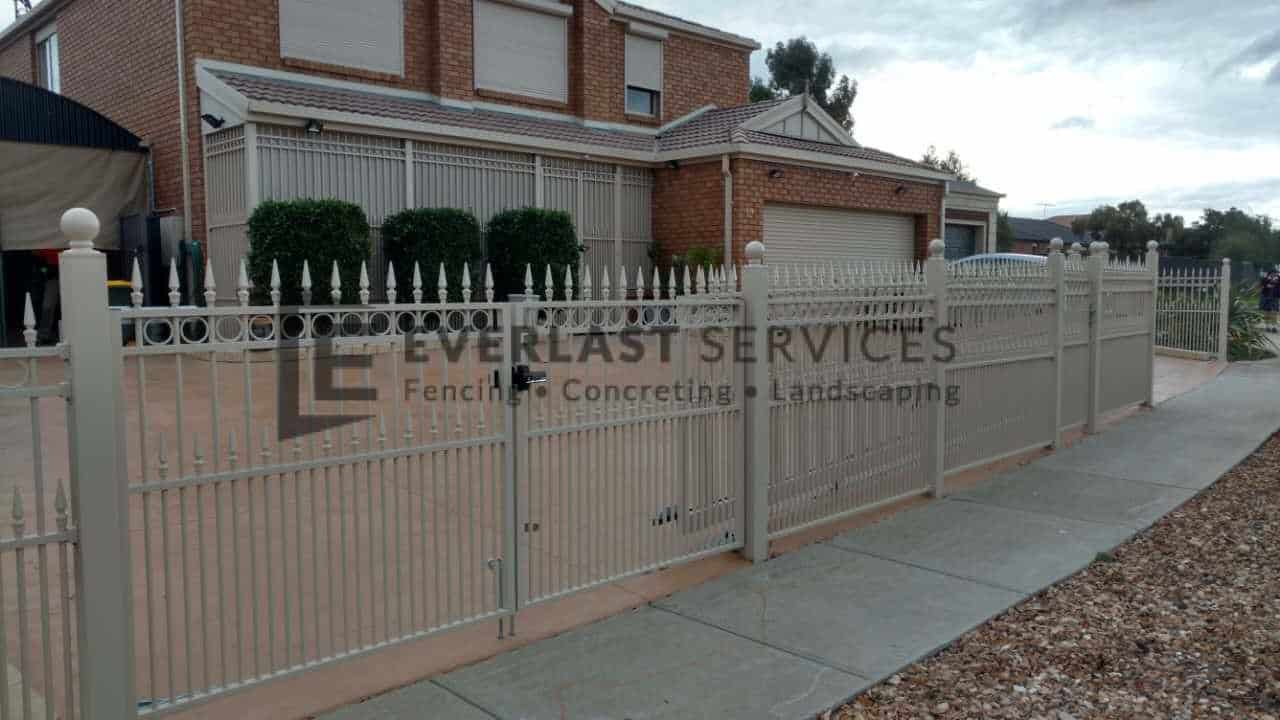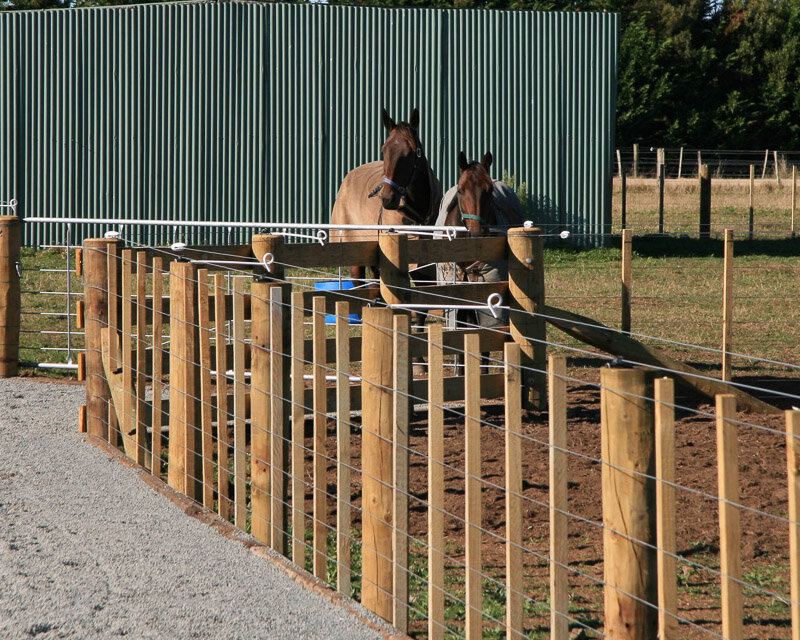Top 6 Mistakes to Avoid When Hiring Fence Contractors for Your Next Project
Top 6 Mistakes to Avoid When Hiring Fence Contractors for Your Next Project
Blog Article
A Comprehensive Guide to Fencing Install: What You Need to Understand About Fence Provider
When it comes to installing a fencing, you've obtained a lot to consider. You'll need to examine your residential property and choose if you want to tackle the installation yourself or work with an expert.
Understanding Various Sorts Of Fencing Products
When you're picking a fencing, understanding the various kinds of fence materials is necessary. Each material supplies one-of-a-kind advantages and downsides, affecting your decision. Wood provides a classic look and can be personalized, but it needs normal maintenance and may rot gradually. Plastic is low-maintenance and sturdy, standing up to fading and parasites, but it can be pricier upfront. Chain-link fencing is affordable and useful for enclosing big areas, though it lacks privacy and visual allure. Steel fence, like functioned iron or aluminum, provides strength and elegance yet might require rust protection. Composite products mix the very best of wood and plastic, providing sturdiness with an all-natural look. Consider your budget, preferred aesthetic appeals, and upkeep choices when examining these choices. Ultimately, choosing the ideal material will assist you produce a fence that meets your needs and enhances your home's value.
Examining Your Residential Or Commercial Property and Secure Fencing Needs
Prior to you begin your fence installment, it's vital to assess your residential property boundaries and the function of your secure fencing. Comprehending neighborhood regulations and licenses will certainly also assist you stay clear of any lawful concerns down the line. By considering these aspects, you'll guarantee your fence satisfies both your demands and community requirements.
Property Boundaries and Lines
Comprehending your property boundaries is necessary for an effective fencing installation, as it not only assists you establish where your fencing will go however likewise ensures you're valuing your neighbors' room. Start by evaluating your residential property act or survey, which usually details the specific borders. You could also want to consult with a professional property surveyor if you're not sure.
When you have actually developed your borders, note them plainly with risks or flags. This aesthetic aid will assist you throughout the setup and stop any type of conflicts with neighbors. Keep in mind, local zoning laws may determine fencing positioning and height, so inspect those policies too. Taking these steps guarantees your fencing is appropriately positioned and certified, making the whole process smoother for you.
Function of Fencing
Secure fencing offers numerous purposes that can significantly enhance your residential or commercial property. It gives protection by producing a barrier that prevents intruders and shields your personal belongings. Second, it uses privacy, permitting you to enjoy your outdoor space without stressing over prying eyes. Third, fencing can define your residential or commercial property boundaries, making it clear where your area finishes and your next-door neighbor's starts. Additionally, it can enhance the visual charm of your home, including character and style while increasing aesthetic allure. Finally, a well-placed fencing can help handle noise from neighboring roadways or neighbors and even keep pet dogs and children safe. By reviewing your particular demands, you can choose the ideal sort of fencing to accomplish these advantages efficiently.

Local Rules and Permits
How can you ensure your fencing installation conforms with neighborhood policies? Some locations require licenses for any kind of new fencing, while others might only need them for taller frameworks.
Additionally, think about home lines and any kind of easements on your land. Marking your limits can protect against disputes with next-door neighbors or possible legal problems. By recognizing these regulations in advance, you can stay clear of pricey mistakes and establish your fencing is developed to last, improving both your property's value and your comfort.
Local Laws and Permits for Fence
Prior to you begin your secure fencing task, it is essential to check local policies and obtain any type of needed authorizations. Each city or county has its own guidelines relating to fencing elevation, products, and placement. These regulations guarantee that your fence follows safety standards and neighborhood looks.
You may need to submit a fencing plan, outlining dimensions and materials. Some locations might even call for a study to verify residential or commercial property limits.
Neglecting to follow these policies can cause fines or compelled elimination of your fence, squandering both time and cash. Take the time to research study and safeguard the appropriate authorizations for a smooth setup procedure. This step is crucial in making certain your task aligns with regional laws and neighborhood standards.
Selecting In Between DIY Installment and Professional Providers
Are you considering whether to deal with the fencing installation on your own or hire an expert? This decision hinges on several aspects. Evaluate your skill degree. If you come in handy and have experience with similar tasks, do it yourself might save you cash. Be honest regarding your abilities; errors can lead to added prices and headaches.
Following, take into consideration the moment dedication. Installing a fence takes time, and if you're managing a hectic routine, employing an expert can ensure it gets done successfully. In addition, think of the complexity of the project. If your yard has challenging terrain or particular style demands, experts bring know-how that can make a distinction.
Finally, consider local regulations. A specialist recognizes the authorizations and codes required, helping you avoid possible penalties. Ultimately, consider your abilities, time, complexity, and guidelines to make the most effective choice for your secure fencing job.
Step-by-Step Guide to Fence Setup
Once you have actually made a decision to move on with your fence setup, following a structured detailed method will certainly ensure a smooth process. Start by marking the fencing line with stakes and string to envision the design. Next off, inspect local guidelines to verify conformity with elevation and property lines.
Dig article holes at the very least two feet deep, spaced according to your fence kind-- usually 6 to 8 feet apart. Put the messages right into the holes and load them with concrete for stability. As soon as the posts are established, attach the straight rails or panels, seeing to it they're level.
Check for any kind of loosened connections and make needed changes. Your fencing should now be prepared to improve your home and supply the personal privacy or protection you require!
Maintenance Tips for Longevity of Your Fence
To keep your fence looking terrific and enduring much longer, normal upkeep is vital. You ought to establish up a cleaning routine, check for any kind of damage, and use safety finishes as required. By remaining aggressive with these jobs, you'll assure your fencing continues to be tough and eye-catching for several years to find.
Normal Cleansing Schedule
While it may be simple to neglect, establishing a regular cleaning schedule is crucial for maintaining the longevity of your fence. Begin by washing your fencing with water at the very least when every period to get rid of dust and debris. For wooden fencings, utilize a gentle soap service and a soft brush to scrub away any mold and mildew or mold. Don't forget to check for any kind of rust on metal fencings; a cord brush can assist eliminate it, adhered to by a layer of rust-resistant paint. If you stay in a location with hefty pollen or dirt, you might desire to enhance your cleaning regularity. Keeping your fence tidy not only enhances its look however also expands its life, conserving you cash over time.
Check for Damages
Frequently examining your fence for damage is essential if you desire to preserve its stability and long life. Begin by walking around your fencing to look for visible indications of wear, such as fractures, loose boards, or rust. Check for any signs of parasites, like termites or woodpeckers, that might jeopardize your fence's structure.
Apply Protective Coatings
After checking your fence for damages, using protective coverings is an essential step in guaranteeing its durability - Fence Builders. If your fencing is vinyl or metal, take into consideration a UV-protective spray or paint to stop fading and rust.
See to it to cleanse the surface thoroughly prior to application, as dirt and grime can weaken the covering's performance. Apply the covering in dry weather for far better bond, and Web Site do not fail to remember to follow the supplier's guidelines for the very best results. Regularly reapply every few years to maintain your fencing looking great and standing solid versus the elements.
Expense Factors To Consider and Budgeting for Your Fencing Task
When intending your fence job, comprehending price considerations is necessary to staying within spending plan. Beginning by figuring out the kind of material you want, as expenses can differ substantially between wood, vinyl, and metal. Don't forget to consider labor expenses-- working with experts might conserve you time but can enhance your overall costs.
Following, determine your home to determine the direct footage needed, as this straight effects material expenses. In addition, take into consideration any type of permits you could require, which can include to your spending plan.

Last but not least, it's a good concept to reserve a contingency fund go to website for unforeseen expenditures. By planning very carefully and considering these elements, you can produce a practical budget that satisfies your fence requires without damaging the bank.
Often Asked Inquiries
How much time Does the Average Fencing Installment Take?
The average fence installment usually takes one to 3 days, depending upon the fencing kind and dimension of your yard. You'll require to consider any delays because of weather or allow demands as well.
What Should I Do if My Fencing Is Harmed?
If your fencing is damaged, initially assess the extent of the damage. Repair minor concerns yourself, however for major issues, think about calling an expert. Do not wait also long; it'll aid protect against better difficulties.
Can I Mount a Fencing on an Incline?
Yes, you can set up a fencing on a slope. You'll need to readjust your installment approach, either by stepping the panels down or utilizing a racked style to ensure security and appropriate positioning with the terrain.
What Are the very best Practices for Fencing Painting?
To repaint your fence efficiently, start with correct cleaning and sanding. Usage high-grade paint and use in even strokes. Don't neglect to select the best weather for paint, official source guaranteeing it's dry and light.
Just how Typically Should I Examine My Fence?
You need to evaluate your fence a minimum of twice a year, concentrating on signs of damages, rot, or rust. Normal checks assist you catch concerns early, ensuring your fencing stays tough and visually attractive longer.
Report this page